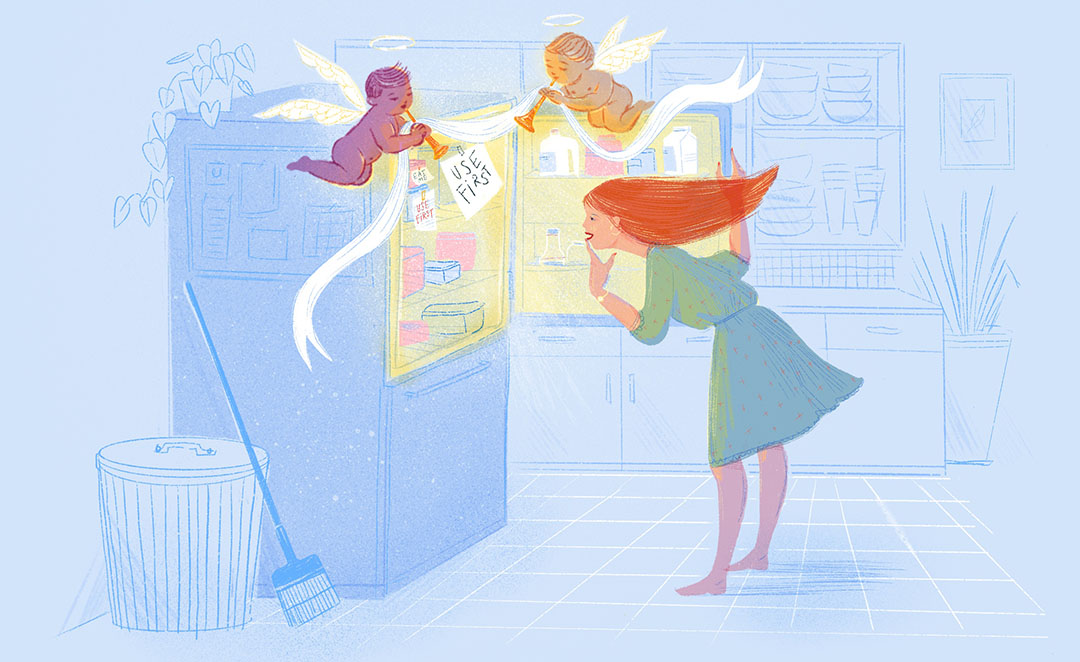Reducing food and packaging waste in the heart of the home.
Most of us have grown up hearing about the three Rs of conservation: reduce, reuse, and recycle. Kim Rios, sustainability coordinator for Keep Truckee Meadows Beautiful, emphasizes the importance of two more we should follow to reduce kitchen waste: refuse and rot. Maybe we can even add a sixth R, review, to the list?
“[Reducing waste] can be overwhelming, and it’s important for us to not discourage people and automatically expect people to create less waste,” Rios says. “It’s the baby steps that matter.”
According to the American Journal of Agricultural Economics, each American household wastes about 32 percent of its food, at a cost of about $1,866 per year. For the nation, that amounts to about $240 billion per year. Food-packaging waste also is daunting; the Environmental Protection Agency reports that more than 82 million tons of packaging went to landfills in 2018.
If we refuse to bring extra food and packaging into the home, that covers the first step. Rot allows any spoiled or leftover food to go into the compost. And it’s a good idea to continually review how we shop and what we choose to put in our carts.
Reducing Food Waste
“When you go to the grocery store, have a plan and try to stick to it,” says Patty Moen, Northern Nevada Recycling Coordinator at the Nevada Division of Environmental Protection. “One of the main things that causes food waste is impulse buying.”
NDEP’s spring food waste challenge gives shopping, storage, and food-prep tips to community members. Over the course of four weeks, challenge participants monitor and record their food waste before and after implementing the reduction strategies.
These strategies include:
- When making a shopping list, shop your kitchen first. Make another list of what you already have and what can work with new items you purchase.
- Moen also recommends rethinking wholesale stores such as Costco. The bulk option seems tempting, but buying too much food that can’t be consumed only contributes to the waste problem.
- Designate a spot at the front of your fridge as an “eat first” section. Place a sticky note in the area to remind family members that food here should be consumed before breaking into any new items. Rios suggests keeping this food in clear containers so you can see what you have.
- Use this principle for nonperishables or longer-lasting foods, too. Moen suggests taking a tip from restaurants and rotating cans or packaged items by bringing older items to the front to consume first.
“That’s another thing to keep in mind — the product date labeling such as ‘Best by…’ isn’t referring to food safety, but food quality,” Moen says. “Bottled water and soda have use-by dates, which are kind of ridiculous. Just because someone put a date on it doesn’t mean it’s not good [after it expires].”
Reducing Packaging Waste
Here’s where the reviewing step really comes into play. When shopping for food, question what actually needs to be packaged. Do you really need that plastic bag for bananas? The fruit comes in its own convenient natural yellow packaging with a bonus handle. Rios prefers old fashioned ways of making coffee, such as pour overs, rather than using coffeemakers that require single-use plastic pods.
Moen suggests skimming grocery store aisles for alternative packaging such as paper rather than plastic. She advocates using your own jars or recycled plastic bags to fill up on bulk items as well as reusing bread and tortilla storage bags.
Moen is a big fan of bringing her own bags to farmers’ markets. Rios adds that if you forget your reusable bags in your car, take your groceries out to your car and bag them there. This process also saves time spent inside the store.
A few local establishments also are fighting to reduce packaging waste. Both the Great Basin Community Food Co-op and Replenish Refillery & Gift in Reno allow you to bring in your own containers to fill with shampoo, lotion, oils, and even toilet-cleaning tabs. The Waste Less Shop at The Village at Rancharrah in Reno has a BulkBar, where you can fill up on laundry and dish soap, all-purpose cleaner, and natural lotion.
“It’s such an educational experience to go into some of these shops because they are doing pretty innovative things that you don’t necessarily come across in larger stores,” Rios says.
Such actions may seem small, but if enough people start taking them, it could make a big difference.
Christina Nellemann recently enjoyed a visit to The Waste Less Shop and is not embarrassed to bag her groceries in the back of her car.
Tips on Food Storage
FoodKeeper App
Foodsafety.gov/keep-food-safe/foodkeeper-app
Save The Food
Savethefood.com
Packaging and Recycling Guides
Keep Truckee Meadows Beautiful
Ktmb.org/recycle
Nevada Division of Environmental Protection
Ndep.nv.gov/nevada-recycles
Refill Stores
Great Basin Community Food Co-op
Greatbasinfood.coop
Replenish Refillery & Gift
Replenishreno.com
The Waste Less Shop
Thewastelessshop.com


